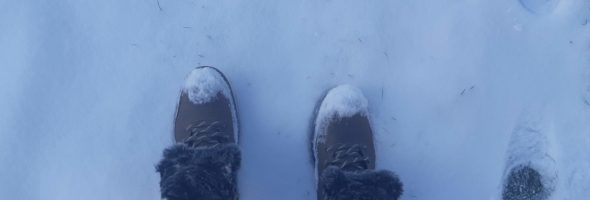For C2C Pro-D day, I attended a workshop called “Taking Secondary Science Outside.” I really enjoyed my time in this session, as it was balanced with hands-on activities, group brainstorming and useful ways to assess student work. We began by going outside and thinking about the following question: Is it Autumn or is it Winter? We were tasked with gathering evidence of both. I appreciated this question, as its broadness allows for interpretation but it is simple enough that any grade could complete the task and achieve a learning outcome in the BC Science curriculum.
During our talk on assessment, Deneen (presenter), noted that the big difference between Formative and Summative Assessment is that Formative continues, Summative ends. An example of Formative Assessment during our outside activity was asking the question “Did I gather high-quality evidence? Why or why not?” This can lead into a discussion where students create criteria for what constitutes good evidence and mediocre evidence. This is the mark of an effective reporting system, where educators are willing to share the learning continuum with students and even take it a step further, by allowing students to have a say in what is important.
The presenter, Deneen, also noted that asking students to continuously work on improving a hypothesis provides a great opportunity for deep learning. Asking “How could this hypothesis or question be more specific? Use more descriptive wording? Be more connected to past learning?” can help students use more meta-cognitive skills. She explained that, by using Assessment-as-Learning during class, she always received higher-quality work from students. The 4-point progression scale can be useful in this scenario for students to place their work along the continuum of emerging, developing, proficient and extending with the sweet spot at proficient and a target at extending.
This experience made me think of Katie White’s “Learning Story,” where students express their learning in a way that is personally meaningful. Allowing students to answer the question “What do YOU think your mark should be?” is very empowering, especially for learners that have struggled with typical top-down, Summative Assessment. TOF’s roundtable discussion on “Going Grade-less” was also valuable in showing how many educators are behind the idea of using Assessment-as-Learning, and allowing students to show their learning in ways that make sense personally.
Overall, the Pro-D was useful for seeing assessment in its many forms. I gathered information and insight from all three of my sessions: Taking Secondary Science Outside, Eco-Guardian at the Race Rocks Reserve and Developing Salmon-based Education programs in the Shuswap. I left with the most from the first session, however, and chose to focus on it for my reflection.

